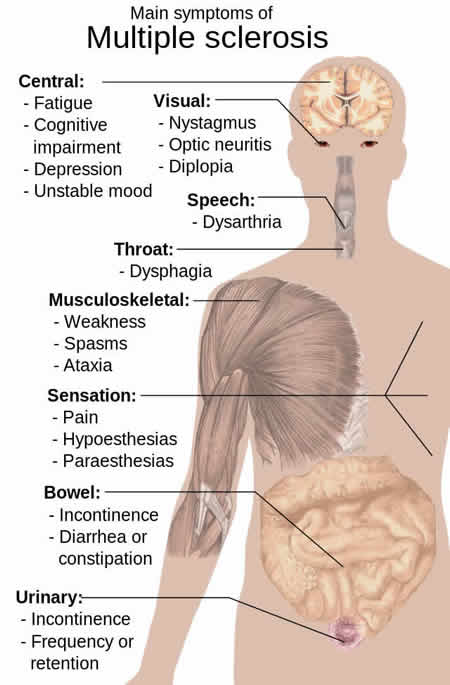Mindfulness meditation appears to affect the brain in ways that reduce pain.
Mindfulness meditation reduces pain, study finds
Published:
MNT featured
Academic journal
Mindfulness meditation can bring greater pain relief than a placebo, according to research published in the Journal of Neuroscience.
The findings, by scientists at Wake Forest Baptist Medical Center in
Winston-Salem, NC, are the first to show that patterns of brain activity
produced by mindfulness meditation differ from those produced by a
placebo cream.
Contemplatives have long reported the benefits of mindfulness meditation on pain, and brain imaging technology has revealed more about the mechanisms involved. Whether the benefits stem from religious practices or mindfulness itself has remained unclear.
Meditation-related pain reduction is now a rapidly emerging field, but more specific experimental evidence has been needed to advance it.
Lead author Fadel Zaidan, PhD, and colleagues have previously noted the effect of expectation, distraction, attention, beliefs, placebo, hypnosis, stress, anxiety, mood and emotional state on pain. Enhanced cognitive and emotional control have been shown to help decrease pain; mindfulness could play a role.
Mindfulness has been defined as:
Different meditative practices can be termed "mindfulness," but two broad categories encompass them: focused attention (FA) and open monitoring (OM).
FA is associated with maintaining focus on a specific object, say, flow of the breath or an external object. OM involves a non-directed acknowledgment of any sensory, emotional or cognitive event that arises in the mind, as in Zen meditation.
The current study takes a step toward isolating the 'active ingredients' of meditation, using pain ratings and brain imaging to determine whether mindfulness meditation is merely a placebo effect.
Seventy-five healthy, pain-free participants were randomly assigned to one of four groups: mindfulness meditation, placebo meditation (relaxation), placebo analgesic cream (petroleum jelly) or control.
Pain was induced by using a thermal probe to heat a small area of the skin to 120.2 degrees Fahrenheit (49 degrees Centigrade) - a level of heat most people find very painful.
The participants' brains were scanned with arterial spin labeling magnetic resonance imaging (ASL MRI) before and after their respective 4-day group interventions.
In the mindfulness meditation group, pain intensity fell by 27% and the emotional aspect of pain fell by 44%. The placebo cream reduced the sensation of pain by 11% and emotional aspect by 13%.
Brain scans showed that mindfulness meditation produced very different patterns of activity than those produced by placebo to reduce pain.
In placebo meditation, a 9% decrease in pain rating and 24% in pain unpleasantness was noted, possibly due to a relaxation effect associated with slower breathing.
In this study, mindfulness meditation reduced pain by activating the orbitofrontal and anterior cingulate cortex brain regions, associated with the self-control of pain; while the placebo cream lowered pain by reducing brain activity in the secondary somatosensory cortex, or pain-processing areas.
The thalamus was deactivated during mindfulness meditation, but activated during all other conditions. The thalamus serves as a gateway that determines if sensory information is allowed to reach higher brain centers. By deactivating this area, mindfulness meditation may have caused signals about pain to simply fade away, the team suggests.
While the team expected some overlap in brain regions between meditation and placebo, they were surprised to find new and objective evidence of the unique way in which mindfulness meditation reduces pain.
Zeidan adds:
In previous studies on the effect of mindfulness training, 3 days of training for 20 minutes a day significantly reduced ratings of pain compared with distraction activities and relaxation.
Is it time for mindfulness training to become a treatment option for acute and chronic pain?
Medical News Today reported earlier this year that mindfulness meditation could help people stop smoking.
Written by Yvette Brazier
Medical News TodayContemplatives have long reported the benefits of mindfulness meditation on pain, and brain imaging technology has revealed more about the mechanisms involved. Whether the benefits stem from religious practices or mindfulness itself has remained unclear.
Meditation-related pain reduction is now a rapidly emerging field, but more specific experimental evidence has been needed to advance it.
Lead author Fadel Zaidan, PhD, and colleagues have previously noted the effect of expectation, distraction, attention, beliefs, placebo, hypnosis, stress, anxiety, mood and emotional state on pain. Enhanced cognitive and emotional control have been shown to help decrease pain; mindfulness could play a role.
What is mindfulness?
Mindfulness has been defined as:
- Regulated, sustained attention to the moment-to-moment quality and character of sensory, emotional and cognitive events
- Recognition of such events as momentary, fleeting and changeable
- A consequent lack of emotional or cognitive appraisal and/or reactions to these events.
Different meditative practices can be termed "mindfulness," but two broad categories encompass them: focused attention (FA) and open monitoring (OM).
FA is associated with maintaining focus on a specific object, say, flow of the breath or an external object. OM involves a non-directed acknowledgment of any sensory, emotional or cognitive event that arises in the mind, as in Zen meditation.
Mindfulness and health
Mindfulness meditation has been found to improve a range of cognitive and health outcomes, including anxiety, depression and stress. It is associated with enhanced cognitive control, emotion regulation, positive mood and acceptance, each of which has been linked with pain modulation.The current study takes a step toward isolating the 'active ingredients' of meditation, using pain ratings and brain imaging to determine whether mindfulness meditation is merely a placebo effect.
Seventy-five healthy, pain-free participants were randomly assigned to one of four groups: mindfulness meditation, placebo meditation (relaxation), placebo analgesic cream (petroleum jelly) or control.
Pain was induced by using a thermal probe to heat a small area of the skin to 120.2 degrees Fahrenheit (49 degrees Centigrade) - a level of heat most people find very painful.
Greatest pain reduction in mindfulness group
Study participants then rated pain intensity (physical sensation) and pain unpleasantness (emotional response).The participants' brains were scanned with arterial spin labeling magnetic resonance imaging (ASL MRI) before and after their respective 4-day group interventions.
In the mindfulness meditation group, pain intensity fell by 27% and the emotional aspect of pain fell by 44%. The placebo cream reduced the sensation of pain by 11% and emotional aspect by 13%.
Brain scans showed that mindfulness meditation produced very different patterns of activity than those produced by placebo to reduce pain.
In placebo meditation, a 9% decrease in pain rating and 24% in pain unpleasantness was noted, possibly due to a relaxation effect associated with slower breathing.
Which part of the brain is affected?
Previous data have indicated that, like other cognitive factors that modulate pain, prefrontal and cingulate cortices are intimately involved in the modulation of pain by mindfulness meditation.In this study, mindfulness meditation reduced pain by activating the orbitofrontal and anterior cingulate cortex brain regions, associated with the self-control of pain; while the placebo cream lowered pain by reducing brain activity in the secondary somatosensory cortex, or pain-processing areas.
The thalamus was deactivated during mindfulness meditation, but activated during all other conditions. The thalamus serves as a gateway that determines if sensory information is allowed to reach higher brain centers. By deactivating this area, mindfulness meditation may have caused signals about pain to simply fade away, the team suggests.
While the team expected some overlap in brain regions between meditation and placebo, they were surprised to find new and objective evidence of the unique way in which mindfulness meditation reduces pain.
Zeidan adds:
"Based on our findings, we believe that as little as four 20-minute daily sessions of mindfulness meditation could enhance pain treatment in a clinical setting."He cautions that since the participants were healthy, pain-free volunteers, findings cannot yet be generalized to chronic pain patients.
In previous studies on the effect of mindfulness training, 3 days of training for 20 minutes a day significantly reduced ratings of pain compared with distraction activities and relaxation.
Is it time for mindfulness training to become a treatment option for acute and chronic pain?
Medical News Today reported earlier this year that mindfulness meditation could help people stop smoking.
Written by Yvette Brazier



![[man meditating]](http://cdn1.medicalnewstoday.com/content/images/articles/302/302620/man-meditating.jpg)



 Wilhelm Gustloff
Wilhelm Gustloff



